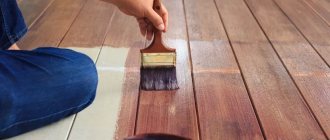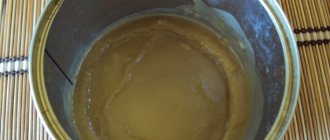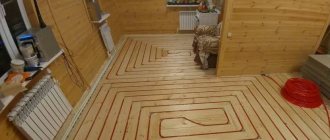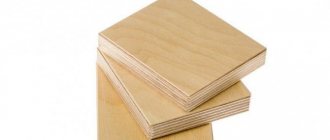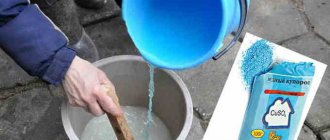Shrinkage processes occurring in a wooden structure during the first years after construction inevitably lead to the formation of cracks. Previously, there was only one way to insulate a log house - caulking. Today, many owners of wooden houses prefer the more modern method of thermal insulation using the “warm seam” technology to traditional caulking. This technique allows you to efficiently and quickly isolate the cracks formed in the inter-crown seams of logs during the shrinkage process of the log house. Usually, specialists are hired for this work who competently and professionally perform sealing. In this review, you will find practical recommendations on how to properly make a warm seam for wooden houses with your own hands, and also find out what typical mistakes non-professional craftsmen most often make.
Price
Sealant prices vary widely. The cost of products is influenced by the popularity of the brand and the place of production (domestic or foreign companies). To carry out large-scale work, it is recommended to buy sealant in a large container. It's cheaper than buying several compact tubes. The average consumption of 600 ml of composition in a cartridge is 4-6 linear meters. The cost of the popular German product Remmers is 430-450 rubles.
Eurotex sealant is supplied in plastic buckets of 25 kg, at a price of 7,000 rubles. But this amount of mixture can be processed 250 linear meters. seams.
Types of packaging
Special attention should be paid to the packaging options for sealants. Regardless of type, these drugs are available in several form factors.
When choosing between them, you should focus only on personal preferences and benefits (large containers are cheaper if you need a lot of sealant).
| Type of packaging | Peculiarities |
| Tuba | The sealant is squeezed onto the seam directly from the tube, and then shaped and leveled with a chisel. But you have to work quickly - within 10 minutes the polymerization process begins, the sealant becomes harder and more intractable. |
| Bucket | In this case, the sealant is manually scooped onto a spatula and applied to the wood. |
| Box | Often equipped with a lid, which simplifies the work with the spatula. Sometimes there is an “adapter” to put the sealant into the caulk gun. |
| Cartridge | Specially shaped to be inserted into the gun. |
| Foam cord | Sold in rolls. It is used according to the principle of caulking with jute - the cord is driven into the crack with some hard tool. |
Application technology
To process a wooden frame using the new modern warm seam technology, you need to follow certain rules and recommendations from the craftsmen.
The process of sealing joints can be divided into several stages:
- Cleaning the gaps from dust and debris, sealing the seams along the length with masking tape.
2. Laying thermal insulation material to fill the inter-crown space.
3. Laying a special Vilaterm cord, limiting the contact of the sealant with the insulation.
4. Applying a warm seam to the joints using a construction gun according to the principle of treating the seams with polyurethane foam.
5.Removing excess mass on the seams of a log structure of a wooden structure with a damp rag or spatula.
After sealing the seams with crown sealant, you need to form perfectly even and smooth seams. To do this, use a small brush dipped in clean water to gently smooth the warm seam. To finally level the joints, pass over them with a dampened rag or foam sponge.
On video: How to properly make a “warm seam” with inter-crown sealant.,
Corners and cuts
The most difficult thing to do with your own hands is sealing using the warm seam technology at the junction of wooden walls. To process corners and cuts, lay a cord of the required length into the joints, pushing the material into the middle with a narrow spatula. After this, warm joint sealant is applied and the mass is leveled. The work is painstaking and time-consuming, but the tightness of the entire wooden structure depends on the quality of sealing the corners.
Attention: Wooden walls are treated with impregnations and fire retardants containing solvents and oily inclusions on which the sealant does not adhere well. Craftsmen recommend pre-cleaning the top layer of wood with a grinder, hand grater or sandpaper. Surfaces coated with water-soluble impregnations do not need to be sanded.
In what cases is it necessary to protect the log house with sealant?
During the shrinkage of a wooden house, cracks and gaps appear between the crowns, through which heat escapes. The acute question arises of how to seal the cracks in order to prevent the penetration of cold into the house.
The oldest method of insulation is caulking. It uses jute, felt, tow, and moss. But these materials are short-lived. Insects infest them, birds pull them out and after 2-3 years they need to be added.
Birds can easily pull ordinary tow out of the seams
The warm seam for wooden houses is strong and reliable. It will preserve the thermal insulation of a house for more than 50 years without replacement, and will eliminate cracks and defects in logs.
Professional cord installation gun
Characteristics of “warm joints” for wooden coverings
Wood fixings for professional use are multifunctional and effective.
They can be used for processing warm joints of log houses, brick walls, cracks in concrete and stone structures, as well as for use with materials such as plastic, foam and aerated concrete, and plaster.
The seam lock completely protects wooden structures from adverse weather conditions. All sealants contain substances that prevent the appearance of fungi and mold.
Precautionary measures
Many sealants are fireproof for wood, and also do not pose any risk of explosions, and are non-toxic. Still, when working with them, it is worth protecting the skin of your hands with gloves, but not allowing the product to get into your eyes or mucous membranes. When treating the surface of walls inside the room, ensure good ventilation.
Is it possible to do the sealing yourself?
The production of a warm seam is carried out once and for many years, so special care and strict adherence to technology are required. Non-professionals, beginners, as well as those who ignore important rules, will often make mistakes that will lead to a significant decrease in the quality of the finished seams.
The most common mistakes are:
- Wrong choice of sealing agent.
- Carrying out work in cold and damp weather.
- Applying seams with low thickness.
- Poor base preparation.
- Making interrupted and rough seams.
- Poor smoothing of joints.
If the technology is violated at each stage, the sealing layer may crack, swell or even rupture. This can cause depressurization and the entry of cold air into a wooden house. Moisture will also get into the cracks, and this will cause the materials to rot and the appearance of fungus and mold. As a result, if you completely follow the technology and buy only high-quality materials, then you can do the work yourself.
General information
The essence of insulation technology
Joints between logs in a wooden house require sealing, as do joints in brick and concrete buildings. Still, the insulation process is very different from the others, and also involves the use of other materials. Typically, building compounds do not last long, and when the wood shrinks, it can begin to crumble, crumble, and everything will have to be replaced quite often. But sealant using the “warm seam” technology works many times better and is the most reliable.
So, the method of sealing seams is multi-stage and will imply the following:
To begin with, the gaps between the timber and the logs are sealed with any material for thermal insulation.- The joint will end at the top with a special cord, which will prevent the insulation from coming into contact with the sealing compound.
- At the end of the work, you should apply a layer of warm joint - a special sealant that is suitable for wood, and it is made on the basis of silicone, acrylic or even polyurethane.
The finished seam can be decorated with any available means. The joint turns out to be durable, does not allow moisture to enter the house and also prevents blowing. Sealant is extremely rarely used in isolation, without caulking with additional means, because the gaps between the logs are quite large, and everything can fall out when the materials are displaced.
Features of sealants for sealing joints in wood
Professional products for sealing wood are considered to be universal and quite effective products. They are perfect for creating warm seams in a log house, for filling cracks and holes in masonry made of bricks, concrete, natural stone, and are also suitable for working on foam concrete and aerated concrete, plastic, as well as surfaces that are plastered. Warm joint sealant protects wooden buildings 100% from winds, temperature changes and precipitation. All products also contain antifungal additives that prevent mold from growing. The characteristics and properties of sealants are as follows:
- Safe for the environment and humans.
- Suitable for interior and exterior work.
- They have excellent elasticity (the elongation rate of certain sealants sometimes reaches up to 700%).
- High degree of adhesion to wood and other building materials.
- They are resistant to atmospheric factors and ultraviolet radiation.
- They do not suffer from yellowing or darkening after a while.
Good compositions have exactly these properties, and they are also thixotproof. This means that they can be used without problems on vertical type bases and inclined surfaces - they will not flow in a calm state.
Selection of sealant for a warm seam
The choice of one or another means for sealing seams must be carried out with special care. If you buy low-quality wood sealants, then there is a big risk of wasting effort and money on use. When purchasing, you should make sure that the product is truly suitable for the warm seam technology of a wooden house, and also has excellent adhesion to wood. The service life in outdoor conditions should be from 15 to 20 years or more, and shrinkage after drying should be absent or completely minimal. The excellent elasticity of the compositions is also important, as well as ease of application - they should be produced in a tube that is ideal for a metal mounting gun.
Seam sealants are produced in an incredibly large assortment. The most inexpensive and at the same time safest in cost are acrylic compositions, and they are ideal for interior work because they are environmentally friendly, do not release toxins, and they do not contain solvents. Acrylic adheres well to porous wood, and after polymerization it can even be painted to resemble wood. It is also useful for outdoor work, but is considered less resistant to moisture and ultraviolet radiation than other compounds.
Silicone sealants are perfect for creating a warm seam. They can last 20 to 25 years, are flexible, durable, and also reliable. Acid-based products are inexpensive, and those that are neutral (do not contain acids) boast a higher degree of adhesion to building materials. Silicone doesn't have many disadvantages. This means that a dried seam cannot be painted, although there are ready-made painted mixtures on sale. You should not add pigment to the composition yourself - this can only be done using a special vacuum mixer. There is another type of “warm” sealant, or rather, polyurethane compounds.
They have the following characteristics:
Optimal adhesion and strength when applied to wood.- Tolerance to mechanical and chemical influences, moisture.
- No shrinkage after drying.
- Suitable for painting as the joint cures.
- Resistance to ultraviolet radiation.
- Excellent elasticity, resistance to deformation.
Many polyurethane-based sealants contain solvents, and therefore should ideally be used outdoors. When choosing a product, you should give preference to formulations from famous brands.
We offer you signs of really good products:
- Neomid (Wood Professional Plus) is an acrylic-based sealant that is tear-resistant, elastic and low-flow.
- BARTONS “Warm House” is a silicone-based composition that does not shrink, and also contains a high concentration of fungicidal additives.
- Perma Chink is an acrylic-based sealant that sets quickly, is also quite durable and has minimal consumption.
- Energy-Seal is an acrylic-type product, perfect for processing seams up to 2.5 cm in size, and tolerates deformation well.
Now let's talk about how to use sealants correctly.
Cuts and joints
The most labor-intensive process is the process of sealing cracks in the joints of the walls of a wooden building.
To seal cuts and warm joints, the gaps are filled using a spatula with a polyethylene cord of a certain length and thickness.
In many cases this takes a long time. Next, the seam is covered with sealant, leveling the applied product with a damp spatula.
In the case where the joints were impregnated with an oil composition (fire retardant), it makes sense to sand the wood with a grinder in advance, otherwise the sealant will not polymerize properly.
Tools and raw materials
To start treating cracks with sealant, you need to purchase a retainer in a form suitable for the installation gun. For work you will also need:
- polyethylene foam in the form of a cord;
- narrowed spatula;
- brush for painting;
- a piece of fabric;
- water;
- spray;
- masking adhesive tape;
- primer for wood.
You can process the seams by hand, but using a mounting gun will speed up and simplify the process.
The device helps to comply with the consumption rate, treat the cracks with sealant, applying the fixative evenly in strips. It is almost impossible to achieve this manually.
Process methodology
The gaps between the beams in a wooden structure must be sealed, like joints in concrete and brick walls.
However, sealing logs occurs differently and using other substances. The service life of simple sealants is short; due to shrinkage, they crumble and fall apart, and require frequent replacement. The so-called “warm seam” fixation element is much more effective and durable.
The stages of forming a “warm seam” are carried out in the following order:
- First of all, the gaps between the beams are filled with some composition with thermal insulation properties;
- A special cord is placed over the connection; it prevents contact with the sealant;
- The final stage is the formation of a “warm seam” using an acrylic, or silicone, or polyurethane fixation element, which is used for wooden surfaces.
The treated warm joint is painted with one or another composition. The seam will become airtight, waterproof and draft-proof.
The sealer is usually applied along with adding a layer of caulk, since the spacing between the beams is wide, so the sealant can bleed through as the logs shift due to shrinkage.
Drawing conclusions
The “warm seam” sealing technology certainly solves the set tasks - people get a warm home and neat, aesthetic seams. Our online store offers the following products for these purposes:
- German Remmers acrylic sealant without grain;
- Remmers acrylic sealant with grain;
- Russian Neomid Wood Professional joint sealant for wood;
- Neomid Wood Professional Plus “Warm House” professional joint sealant for wood;
- Russian VGT acrylic sealant for log houses.
Distinctive features of fixatives for wooden coverings
- Harmless to people and nature;
- Suitable for indoor and outdoor use;
- Very flexible (can increase in length by 7 times);
- Easily bonded to wooden surfaces and other building materials;
- Resistant to ultraviolet radiation and atmospheric influences;
- They do not turn yellow or darken over time.
High-quality fixatives are thixotropic. They can be applied to inclined and vertical surfaces, since they do not flow when at rest.
Common do-it-yourself sealing mistakes
Sealing carried out independently is often of poor quality. As a result, it is not possible to achieve complete heat and moisture insulation, and the work does not look very nice. To prevent this from happening, you should avoid common mistakes.
| Error | Description |
| Wrong choice of sealant | The selected product must be suitable for the operating conditions. So, only silicone composition is suitable for baths and saunas - it can withstand high temperatures. Polyurethane is only suitable for exterior decoration, and acrylic is best not used outside in regions where the winter temperature is below -15°C. |
| Careless wall preparation | The surface must be thoroughly cleaned. The remaining dust particles sharply worsen the adhesion between the materials, and complete sealing cannot be achieved. |
| No primer | With a primer, the sealant will last much longer and will adhere more reliably. |
| Careless seam alignment | When leveling the sealant is neglected, the seam looks crooked and unattractive. This spoils the appearance of the walls, and the situation cannot be changed if the sealant has time to harden. |
| Temperature violation | As mentioned above, you need to work with sealant at a temperature not lower than +5°C. But temperatures above +30°C are also not recommended. |
| Work during precipitation | Wet weather is especially harmful to acrylic compounds, but other types also suffer from waterlogging. It is better to carry out external work when it is dry outside. |
And finally, when creating a warm seam for a private wooden house, you should leave a little sealant in reserve. When drying, the seam may become deformed, and you will have to add a compound to straighten it.
If you want to add anything, we are waiting for your comments!
Preliminary stage
In outdated wooden buildings, the seams are usually sealed with rough tow. It is recommended to get rid of it to reduce the likelihood of mold and insect nests.
Next, dirt and dust are removed from the building, the previous layer of paint is removed, if there was impregnation with an oil solution, and the base is sanded.
The log house is coated with a solution that removes grease, a primer is applied, and left to dry. If there is no preliminary step, the fixative will not be applied in an even layer and will not adhere well enough to the surface being treated.
The next step is laying the polyethylene foam cord. It is necessary to seal the crown space, since it is not advisable to fill the entire gap with a clamp.
Large gaps are first filled with tow and fibers, then polyethylene foam is secured using metal staples. It is necessary to secure the treated surfaces with masking adhesive tape in order to apply the sealant evenly.
Professional insulation of houses
In a short time and at an affordable cost, he carries out work on insulating houses made of timber and any wooden buildings. We offer our clients convenient service, high quality sealing of building joints, and stage-by-stage payment for work. We accept payment including by card. We work in Moscow, the Moscow region, and surrounding areas. We are ready to consider the possibility of cooperation with other regions of the country.
"Master Srubov" is the official representative of many manufacturers of premium sealants - Ramsauer, Remmers, Wooden Wood, the domestic enterprise "Oliva" and other Russian and foreign companies. When choosing materials for work from those manufacturers whose dealers our organization is, we have the opportunity to offer you the most favorable prices for them. But at the customer’s request, we are ready to work with any materials, including VGT sealant.
Our craftsmen have all the necessary knowledge and experience, and have many positive reviews about their work. But our company’s specialists do not stop there, constantly improving their skills, including on an ongoing basis attending practical classes and seminars from leading manufacturers, getting acquainted with new products and technologies for working with them.
For advice, more information or to order sealing services for your home, please contact our employee by phone. You can also leave a request in the “Contacts” section, and a specialist from our company will call you back shortly.
Calculate the cost of painting and insulating your home right now
Do you have accurate measurements of the house?
I measured it myself. I have a house design. Measurers came. I want to call a measurer.
By clicking on the button, you consent to the processing of personal data
How to properly sand the interior walls of a timber house
Preparing materials and installing a window sill when installing windows in a wooden house
How to insulate a basement yourself


